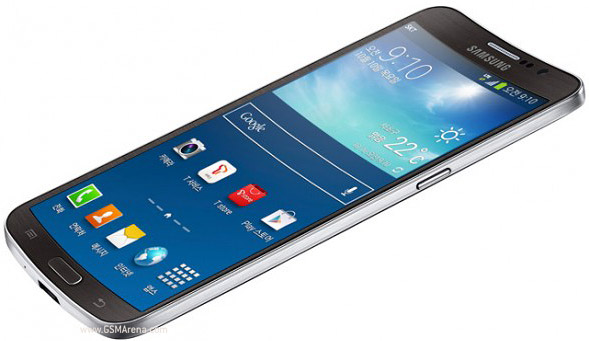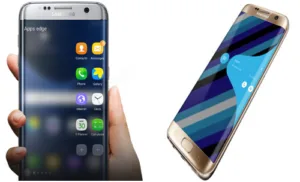Apple Corporation reported its first-ever decline in iPhone sales in its recent fiscal quarter (Apple’s 13-Year Growth Grinds to a Halt – subscription required). Its iPhone sales accounted for two third of company’s revenue in that quarter and it caused Apple’s first quarterly decline in revenue in 13 years. This has created concern about growth expectations for iPhone in future and its impact on Apple’s revenue.

Some fear Apple has lost its flair for creating innovative products. Can OLED display come to the rescue? Can it help Apple to bring back new innovative product design?
iPhone Growth Needs Replacement Demand
Apple reported 51 million iPhone sales in the most recent quarter, compared to 61 million units the year before. One of the main reasons for this slow growth was fewer iPhone upgrades. The smartphone market is maturing and sales are slowing down, especially at the high end. Future growth has to come from replacement demand. Can Apple come up with a new design for iPhone in future that can bring back consumers’ excitement and boost replacement demand?
OLED Display for iPhone
In the display industry, there have been many rumors and expectations about Apple using OLED in future for iPhone products. It is expected that Apple will use flexible OLED to come up with a new design and possibly an exciting new product. Apple has been using only LCD technology for its iPhone products till now and LCD technology is constantly improving in terms of price, performance, power efficiency, brightness, resolutions and contrast. Apple introduced larger screen LCD display for iPhones in late 2014 following the general smartphone industry’s trend to displays with bigger screen sizes. However, the 2015 updates for those models have not received same level of consumer enthusiasm as before. Consumers are delaying replacement of their iPhones and perhaps waiting for really differentiated product rather than small incremental upgrades.
Samsung Focusing on OLED Smart Phones
In contrast to Apple, Samsung Electronics reported growth in profit in Q1 2016. The profit growth was lead by the early launch and successful sales of Galaxy S7 and S7 Edge smartphones, increased OLED panel sales and stronger operations in semiconductor division. It should be remembered that Samsung did not introduce the Galaxy 6 and Galaxy 6 Edge in the first quarter of 2015, but in May. So, an early launch seems to have helped the company achieve year over year growth and profitability. The Galaxy 6 Edge and Galaxy S7 Edge smartphones use flexible OLED display in a new way.
Flexible Display Finds Better Design Acceptance
Flexible OLED display was first used by Samsung Electronics and LG Electronics in their Samsung Galaxy Round and LG G Flex curved smart phone products in 2013. Both these products were very innovative but won only limited acceptance. Consumers really could not see the benefit of curved smart phones. But Samsung’s introduction of the Galaxy 6 Edge and recently introduced Galaxy S7 edge with a new design exploiting the flexible OLED display has helped gain better acceptance. Samsung Display and LG Display are the only two companies that have successful in producing flexible OLED Display panel for smartphones, so far.
 Samsung Galaxy Round with Curved OLED Display
Samsung Galaxy Round with Curved OLED Display
Samsung Galaxy S7 Edge, dual edge
LCD, currently the dominant display technology for smartphones really shines in terms of price performance. It is also the dominant technology for almost all other display-based devices such as TV, monitor, notebooks, and tablets. But when it comes to flexible display, LCD lags OLED.
Samsung Display and Apple Display Agreement
Korean news sources reported recently that Apple has signed an agreement with Samsung Display for OLED panels, which will start from 2017. Samsung Electronic is the most successful in OLED smartphone device sales. Samsung Display, its sister company, is already in volume production of OLED and flexible OLED panels for smartphones. But to meet Apple’s requirements, it has to increase its production capacity. LG display has been the main supplier for iPhone LCD panels up to now. It also has volume OLED production capabilities, but it is better known for larger OLED panels for TVs rather than for smartphones.
OLED Capacity Needs Time To Ramp Up
Display suppliers, other than Samsung Display and LG Display are still behind in terms of volume production of OLED panels. They have to either ramp up or start production of OLED for first time. Given the history of OLED, yield issues and manufacturing challenges, it is unlikely that these new entrants can be ready to supply in 2017. It is also unlikely that Apple will solely depend on one panel supplier for its iPhone product. Given Apple’s track record on innovative products, it is more likely that Apple may be able to come up with a new design using flexible OLED panels. But new product is unlikely to come in 2016.
Flexible Display Coming to the Rescue
Samsung Display has already started selling regular and flexible OLED panels to other smartphone suppliers, especially to some Chinese brands. By 2017 more smartphone suppliers will be using OLED panels and supply will be still an issue.
Flexible OLED display can enable innovative foldable and roll-able, designs. Can Apple create a differentiated design with flexible OLED to bring back consumers’ excitement and boost demand?
Only time will tell.
Sweta Dash is the founding president of Dash-Insights, a market research and consulting company specializing in the display industry. For more information, contact [email protected] or visit www.dash-insight.com

